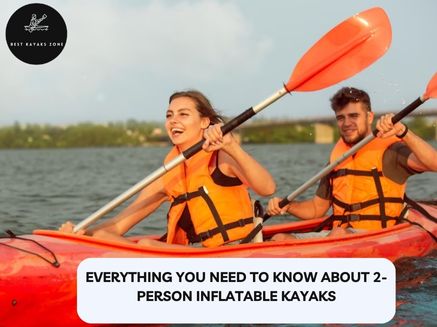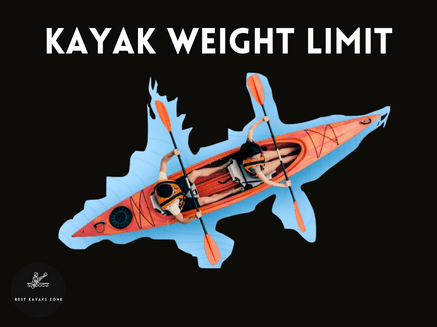Kayaking with your dog is more fun, peaceful, and soothing than it sounds!
Especially if you are IN LOVE with your dog, kayaking with them is most likely to become a core memory for you.
Just remember one thing their safety and comfort should be the top priority because only then will you be able to have fun and relax when kayaking.
Scroll through the article to learn about the tips that can make kayaking with your dog, safe, fun, relaxing, comfortable, and a CORE MEMORY of life!

Best Tips for Kayaking with Your Dog
Your Doggo’s Seat
Make your dog comfortable with a particular seat on the kayak, which will then be a designated seat for your dog. The stay-on kayaks are a better option for dogs as they have more space. You can keep treating your dog with treats to reinforce the particular seat and keep them stable.
Loving Life Jacket
It is indeed important for your dog to wear a life jacket as well because even though dogs are good with swimming, there need to be some extra precautions taken regardless.
For them to feel comfortable in the life jacket, you need to make an extra effort, in finding the perfect life jacket that fits their body perfectly and they feel comfortable in it, so they can go for a few hours wearing it and enjoy voyaging with you safely.
Comfort with Paddling – Good Paddler
The paddling movements can disturb your dog and make your dog feel uneasy, so now it is your turn to make an effort in your skills, so your dog feels comfortable. Learn the long and steady strokes in paddling, and use those, that will keep the kayak stable, and the dog comfortable.
Swimming Expert
If your dog knows how to swim, it is great, and even if it doesn’t it is fine, but knowing how to swim, can be a great pro. It would keep you calm in case the dog jumps out or falls, it will keep the dog safe, stable, and even comfortable with water bodies, which then makes kayaking more fun.
If your dog doesn’t know how to swim, also teach them at least a bit to swim, so they feel comfortable enough to get in the water.
Gear Ready
Always and always, pack well, and be gear ready, keep your kayaking stuff in check, and also load up with treats in good air-tight containers, so the treats stay good for a long while without getting soggy, and your dog can have fun with those snacks.
Handling Tipping Over
As scary as it sounds, and hoping it doesn’t happen, we need to prepare for the worst of the worst. In case, your kayak gets tipped over due to a certain current of water or an obstacle, you should follow these steps,
- The first is to stay calm. Panicking, or getting angry will just make the situation worse for you as well as for your dog.
- Be reassuring to your dog, hold them, calm them, and swim back to the kayak slowly and steadily.
- Set back up the kayak and the paddles, and get your dog in the kayak, once it gets there keep your dog calm and reassured the entire time.
- Once, the dog feels safe, now you can get back to the kayak, calm down, stay for a while, treat them, and then start with the kayaking again, but after taking the sweet time.
One might find getting the dog in the kayak first, and then entering second to be a bit difficult, so you can get in first as well, but most people have a different instinct, but at the end of the day it is about staying safe, so whatever method works for you and your dog should be done.
Handling Dog Jumping Out
Sometimes dogs, end up jumping out of the kayak, which makes the entire situation very anxious and scary, so here are a few things that you can do to keep the situation under control.
- Keep yourself and your dog calm, do not use harsh tones or start screaming. We understand it might be difficult to remain calm at such a point, but panicking would just end up making it worse.
- Command your dog to get back to the kayak, and keep the paddle aside, so they can enter the boat easily.
- When they come near the kayak, use the strap of the life jacket to haul them in back.
- In case your dog doesn’t have a life jacket on (which should not be the case, but if it is), then keep the dog parallel to the side of the kayak and hold them by placing your hands on their chest between the front legs, and then haul them in.
- IMPORTANT – This experience must have been scary not just for you, but for your dog as well, so rather than getting angry or punishing them, hug them tightly, treat them, and reward them for getting back in because you wouldn’t want your dog to feel more scared than it already is.
Conclusion
There are several tips to make the kayaking experience better, and you should definitely follow these, and just make sure the most important one is to keep yourself and your dog calm.
The most important thing is to have fun and feel safe, so do everything that can make the experience better for you and for your new furry kayaking partner.
Hope the article helped! Happy Kayaking!
FAQS:
Is it hard to kayak with a dog?
Kayaking with a dog can be manageable with some preparation and training. It may require patience and practice, especially if your dog is new to being on the water.
How do you take a dog on a kayak?
To take your dog on a kayak, start by acclimating them to the kayak on land. Gradually introduce them to the kayak, let them explore it, and reward them for calm behavior. Once comfortable, try short trips on calm water before venturing further.
How can I make my kayak more comfortable for my dog?
To make your kayak more comfortable for your dog, consider adding a non-slip mat or towel to provide traction and prevent sliding. You can also bring their favorite blanket or bed to create a cozy spot for them to relax. Additionally, ensure there is enough space for them to move around comfortably.
How do you train a dog to stay in a kayak?
Training a dog to stay in a kayak involves teaching them basic commands such as “sit” and “stay” both on land and in the kayak. Start by practising in a calm environment and gradually introduce distractions. Reward your dog for remaining calm and staying in the kayak, and be patient as they learn.



